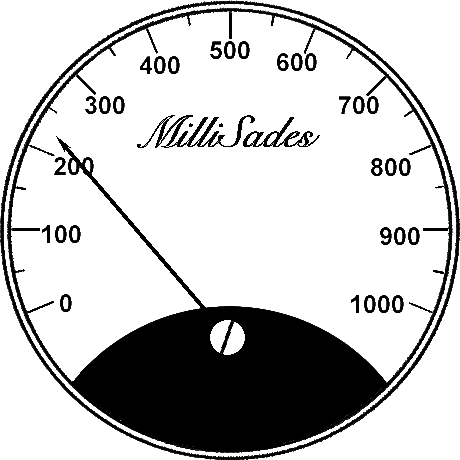The Sade - A New Standard of Measurement


 |
Above: the Sadometer. |
After years of working toward such a standard, the FAIT team has successfully arrived at this graduated, calibrated system for measuring minute changes in discomfort levels, as well as a calibration system for all human interface endeavors. This system of measurement can be implemented in a wide variety of disciplines, including psychology, where it can be used to measure levels of cognitive and sensory dissonance.
While current technology allows measurement down to the thousandth of a Sade (the milliSade), FAIT's researchers continue to work toward achieving even finer resolution in the coming years, pursuing the elusive microSade as their eventual goal.
 FAIT's "Leviatron" project has been an
extremely valuable resource in developing the Sade standard, with its comprehensive data-gathering capabilities.
The ambitious undertaking, utilizing just about every type of sensor imaginable to provide a feedback loop
between subject and computer, has provided the mountain of discomfort-related data required for the
creation of the Sade standard.
FAIT's "Leviatron" project has been an
extremely valuable resource in developing the Sade standard, with its comprehensive data-gathering capabilities.
The ambitious undertaking, utilizing just about every type of sensor imaginable to provide a feedback loop
between subject and computer, has provided the mountain of discomfort-related data required for the
creation of the Sade standard.
The Leviatron's test subjects are continually monitored for temperature, heart rate, blood pressure, respiration, perspiration, and gastric acid levels. Their brainwaves are monitored, as well as their neuromuscular tension at 256 key points on the body. Eye movements and pupillary dilation are also tracked within the HMD to provide information about the user's visual interests.
With this massive amount of data, the Leviatron is capable of pinpointing a subject's emotional states, interests, and fears at any given moment in a session. Using advanced heuristic algorithms, the Cube responds to this input by dynamically updating the user's virtual world according to the Leviatron's current rule set, which correlates the system's rendering algorithms with the various channels of incoming user data. The rule sets can be programmed to stimulate and accentuate the user's hopes, fears, lusts, etc., and the system's architecture is flexible enough to allow both automatic and manually-phased switching between these rule sets over predetermined time periods.
Initial concerns over the difficulty in obtaining objective measurement of the influence of the Leviatron's user interface (shown above) were proven unfounded, once a self-correcting algorithm was implemented in the system's software. The physical limitations of the interface actually turned out to be a key factor in developing the Sade standard.